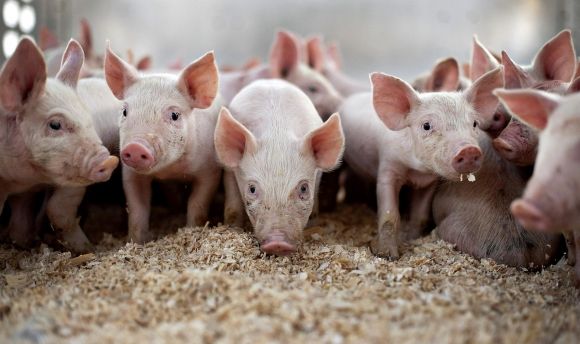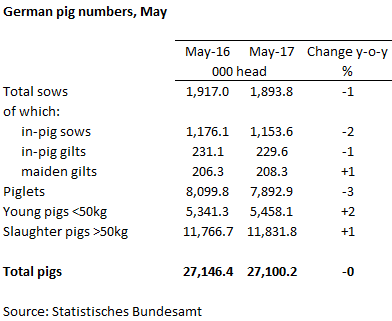 Following the marked decline in the German pig herd during 2016, provisional figures from the May pig census now indicate that numbers are stabilising. As at 1 May this year, the total pig herd stood at 27.1 million head, only marginally lower than a year earlier.
Following the marked decline in the German pig herd during 2016, provisional figures from the May pig census now indicate that numbers are stabilising. As at 1 May this year, the total pig herd stood at 27.1 million head, only marginally lower than a year earlier.
However, despite the overall stable picture, the size of the breeding herd continued to fall with sow numbers declining by just over 1% on the year. Piglet numbers also reflected the smaller breeding herd, falling 3% year-on-year.
Not only had the breeding herd itself declined, but a disproportionate drop in the number of breeders was also apparent. While total farms with pigs were down 3% on 2016, the number of sow-holdings fell by 7%. Reports suggest this decline has not only been driven by market uncertainty, but also the introduction of increasingly burdensome environmental and animal protection regulations.
Based on the above developments, the continued fall in the German breeding herd, as well as piglet numbers, has the potential to further tighten supplies of domestic pigs later in the year. Total slaughterings were already 3% below year earlier levels in the first 4 months of 2017, following from the previous reductions in the German pig stock in 2016.
However, despite previous breeding herd contraction, numbers of fattening pigs actually showed a slight increase on the year of less than 1%, according to the May pig census. Young pig numbers were also up, by 2%. Improvements to sow productivity have likely played a role minimising the impact of the declining sow herd. In addition, live imports can also compensate for the decline. Both Denmark and the Netherlands reported increased live exports of weaners to Germany during the first quarter of 2017, compared to a year earlier. At the same time German exports of piglets have fallen.
As such, the supply of pigs for slaughter in Germany looks to be stabilising in the short term, and if the aforementioned trends continue, there may be little further tightening of supplies. In particular, May census results for Denmark indicate the breeding herd is now moving up, which offers the potential to supply more live pigs for finishing in Germany. Any alleviation of the tight supply situation could arrest the upward price momentum in the coming months, with price increases already slowing in recent weeks.

AHDB.Pork


